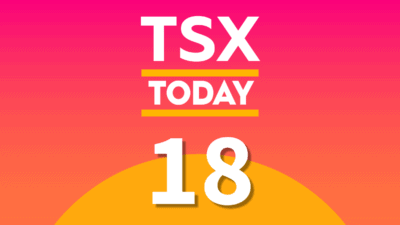Exchange Income Corporation (TSX:EIF) hit a 52-week high of $38.50 October 19. It’s now up 39% year-to-date and 63% over the past year. With a 5.3% yield despite the stock’s big run, investors likely are conflicted about whether or not they should buy its stock.
Don’t be.
The company has put into place a business model that allows it to grow through smart acquisitions, which in turn provide it with a level of diversification that protects shareholders from downturns in one or more of its operating subsidiaries.
While acquisitions often fail to deliver projected synergies and cost savings, Exchange Income has figured out how to make it work; shareholders are the direct beneficiaries of its success with its stock achieving an annualized total return of 18.4% over the past five years. One-third of those returns are from dividends with the remainder from capital appreciation.
As it says in the headline, what’s not to like?
Exchange Income uses the usual criteria any company looks for when making an acquisition: attractive margins, defensible market position, low maintenance capital expenditures, identifiable competitive advantages, barriers to market entry by competitors, etc.
Certainly, there’s nothing earth shattering that we haven’t seen before. So what makes it special?
It focuses on family-owned or closely held businesses that operate in niche markets which generate strong cash flows. Often, these types of businesses don’t have a succession plan in place, making them particularly open to the idea of selling to an organization that understands how owner/operators think.
Warren Buffett operates Berkshire Hathaway Inc. (NYSE:BRK.A)(NYSE:BRK.B) in a similar manner, albeit on a larger scale. Buffett provides prospective sellers with speedy transactions and post-transaction autonomy. As a matter of course, Exchange Income likes to see management stay in place after a deal is done as well as having an equity interest in the company.
Exchange Income’s main role is to provide its acquired companies with access to capital. Much like a good boss who gives their employees the right tools to get the job done, Exchange Income provides middle-market businesses with the right financing, so they can continue to grow.
It sounds simple, but very few serial acquirers can do this over the long haul.
In 2014, the Globe and Mail’s David Milstead, a writer I respect very much, questioned its business model, suggesting two things kept Exchange Income from the poorhouse. First, the company was overly reliant on the earnings of WesTower, its cellphone-tower construction company; and second, it issued hundreds of millions of dollars in debt to cover any cash flow shortfalls.
Let’s fast forward to 2016 to see what has happened on these two fronts.
WesTower’s U.S. operations, which were heavily reliant on one customer, were sold for US$200 million to MasTec, Inc. The Canadian operation, along with the rest of its manufacturing segment, generated $22.8 million EBITDA in 2015 from $192.6 million in revenue, or about 24% of its overall revenue.
There’s no problem there.
As for its debt, it stood at $538 million as of the end of June, or 22% of its market cap and 43% of its total assets.
From where I sit, that’s not an issue either.
I brought this up because it’s always important for investors to look at the pros and the cons of any business. While these might have been issues back in 2014, they don’t appear to be today. Last year it paid out $45 million in dividends, while its free cash flow, excluding maintenance capital expenditures, was $74.4 million, more than double the previous year.
Things are looking up for Exchange Income. I’d take the 5.2% yield despite the 52-week high.







